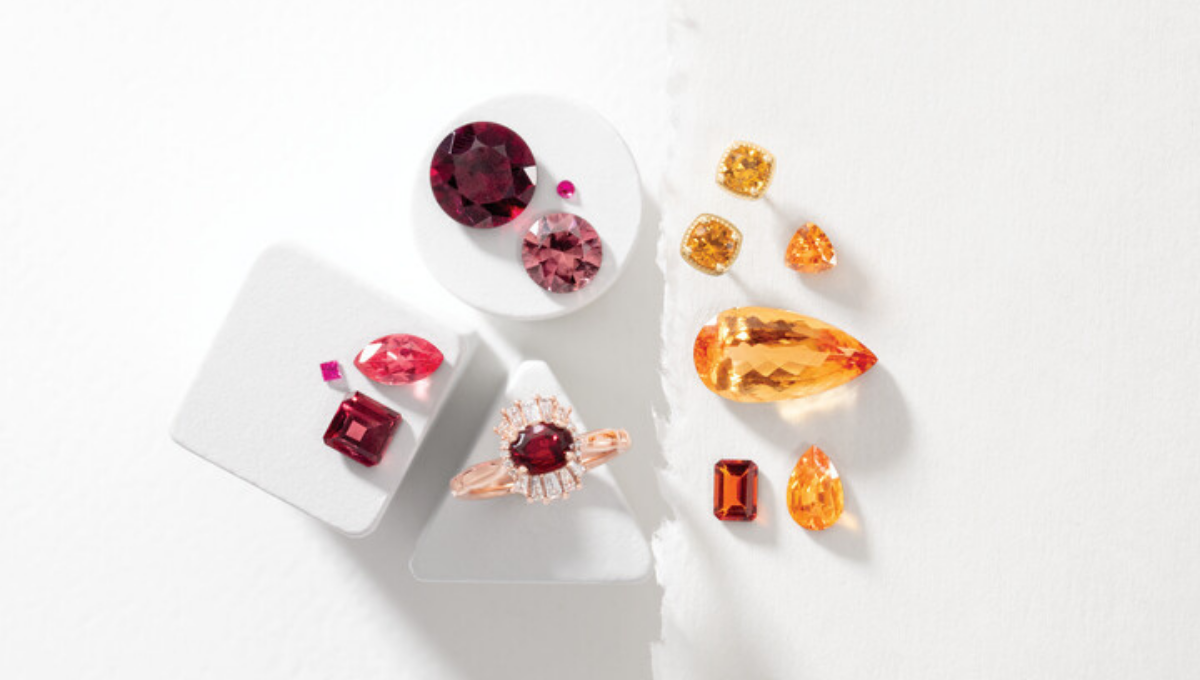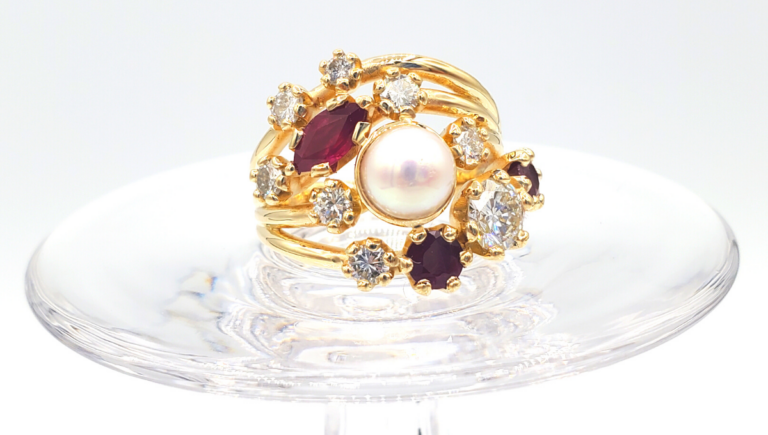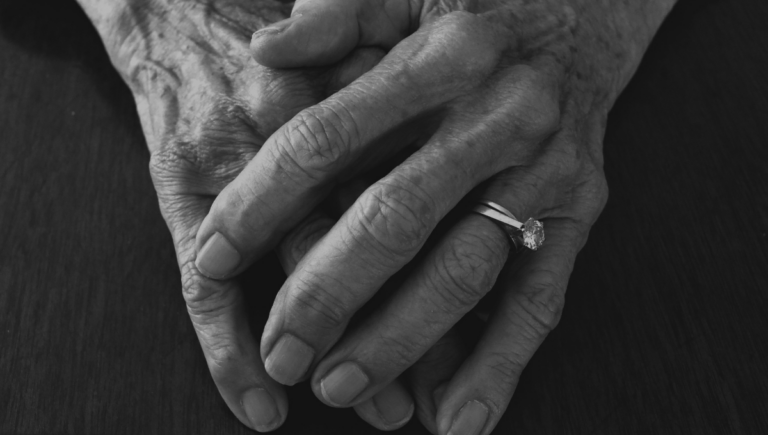Colored gemstone engagement rings are very much in style, decorating the fingers of today’s royals and style-makers. These rings revive a trend that began over 200 years ago. In 1796, Napoleon Bonaparte gave his love Joséphine, future empress, a diamond and sapphire Toi et Moi (“you and me”) ring for their engagement. The Toi et Moi ring, and vintage styles like it, are making a comeback on the fingers of celebrities like ike Emily Ratajkowski and Ariana Grande.
Today, Kate Middleton, the Duchess of Cambridge, wears the most famous colored gemstone engagement ring. Princess Diana’s ring features a 12 ct sapphire encircled by diamonds. Modern brides imitate the look with colored diamonds or gemstones.
Personalizing your jewelry with an experienced, local jeweler like Lake Street Diamond Company ensures your wedding jewelry reflects your style and how you wear it day-to-day.
Customizing a design with a gemstone from our inventory or one you provide is easy. Just about any engagement ring can use colored gemstones, but there are important things to consider. We hope this gemstone guide, listing color and hardness, gives you the confidence to create your dream engagement ring.
Step 1: What Colored Gemstone Works with Your Setting?
The colored gemstones we recommend are dependant on the setting type and its hardness based on the Mohs scale, which ranks gem and mineral hardness on a scale of 1 (least hard – talc) to 10 (hardest of all – diamond). Softer stones need more security and protection in the setting. Harder/denser stones, like moissanite and diamonds allow for more free-form, innovative designs.
What Settings Work With Which Colored Gemstone:
- Prong Setting – Best with a hardness of 5.5 or higher (Feldspar)
- Bezel Setting – Best with a hardness of 6.5 or higher (Quartz)
- Flush Setting – Best with a hardness of 7 or higher (Topaz)
- Tension Setting* – Best with a hardness of 8.5 or higher (Rubies, Sapphires & Diamonds)
*a faux tension setting is used with some softer stones. This modified tension setting has a supportive piece of metal that makes it safer for softer stones that rely on the metal’s tension.
Step 2: Which Colored Gemstone Should You Choose for an Engagement Ring?
There’s an almost infinite number of colored gemstones to consider for your wedding jewelry. As you browse through our shortlist of favorite gemstones, note their ranking on the Mohs hardness scale, tagged at the end.
Red Colored Gemstones –
Ruby is usually the first to come to mind, but there are many shades of red gemstones. The color red has symbolic associations with love, passion, fire, and blood, but natural gemstones in this hue are rare.
- Mozambique Garnet – Comes in shades of med-dark red, brown – 7 – 7.5
- Madeira Citrine – Usually shows up as a dark, reddish-brown stone – 7.
- Ruby – The best known, with color variations from med-dark to pinkish-red – 9.
Pink Colored Gemstones –
Extremely rare and exquisitely charming, your engagement ring will be “Pretty in Pink,” with one of these remarkable gemstones as the centerpiece.
Pink Morganite – A light-medium pink – 7.5-8.
Pink Tourmaline & Pink Sapphire – Most often a medium pink and relatively high on the hardness scale – 7-9.
Champagne Sapphire – A medium peachy pink gemstone – 9.
Padparadscha Sapphire – An unusual pinkish-orange stone – 9.
Orange Colored Gemstones –
Orange gemstones come in a range of hues and intensities from yellowish to reddish-orange. Like the Imperial Topaz, some are rare and a bold choice for a colored gemstone engagement ring.
Citrine – A yellowish-orange stone, a variety of quartz – 7.
Mexican Fire Opal – A dark orange-red and a hardness – 5-6.5.
Spessartite Garnet – A darker yellowish-orange – 7-7.5
Imperial Topaz – A rare version of this popular gem in a range of hues from golden-orange to pink – 8.
Yellow Colored Gemstones –
Yellow gemstone engagement ring options include variations on the traditional diamond (April’s birthstone), topaz, quartz, and sapphire.
Canary Diamond – A light yellow stone – 10.
Lemon Quartz – A light, slightly greenish-yellow stone – 7.
Yellow Sapphire – The highest quality of sapphire is one with a lemon-yellow color – 9 or above.
Green Colored Gemstones –
Green gemstones rank among our most famous and iconic jewels. Sought after for centuries and loved by royalty for its lustrous green looks and supposed spiritual power, it would make for a luxe upgrade on the traditional engagement ring.
Emerald – Medium green – 7.5-8
Tsavorite Garnet – A slightly yellowish green – 7-7.5
Alexandrite – A light green to greenish-blue – 8.5.
Green Tourmaline – Appears as a dark yellowish-green – 7.5.
Blue Colored Gemstones –
Blue remains the most popular color for gemstone engagement rings. Sapphires are found in a lot of ancient jewelry, particularly in crown jewels and royal earrings.
Blue Sapphire – Usually a medium navy to royal blue and fairly tough – 9.
Aquamarine – Light-medium Blue -7.5-8.
Swiss Blue Topaz – Medium-dark bright blue – 8.
London Blue Topaz – Medium-dark greyish blue – 8.
Purple Colored Gemstones –
Naturally occurring purple gemstones are rare. Amethyst, February’s birthstone, is probably the best known, but there are lovely violet hues found within the spinel, tourmaline, and sapphire families.
Alexandrite – A purplish red – 8.5
Amethyst – A deep, dark purple – 7.
Mystic Topaz – Usually light green with hints of purple – 8.
Tanzanite – A medium-bark, bluish-purple stone – 6-7.
Colorless or Clear Gemstones –
Unlike colored gemstones, white or colorless gemstones coordinate well with all outfits, skin tones, or metals. While diamonds are the most sought-after gemstone of this color, white sapphires, white topaz, and zircon are popular diamond substitutes. However, complimentary gems such as opals, pearls, white jade, and moonstone are each unique and beautiful in jewelry.
White Sapphire – Near-colorless (may be slightly yellow, blue, or grey) – 9.
White Topaz – Colorless (or slightly grey) – 8.
Diamond – Classic, completely colorless stone with the highest hardness score – 10.
Moissanite – This meteorite is a colorless, popular alternative to diamonds – 9.25.
Black Colored Gemstones –
Black gemstones are a gender-neutral choice that makes a bold fashion statement. There’s a surprisingly large number to choose from, so we’re sure you’ll easily find the one that’s right for your engagement ring.
Diamond (Black)- A mix of diamond, graphite, and amorphous carbon, it ranges in color from black to opaque black – 1.
Spinel (Black) – Transparent to opaque black with a vitreous to dull luster – 8.
Onyx (Black) – A mix of silica minerals quartz and morganite – 6.5-7
Tourmaline (Black)- When this multicolored stone is of the Dravite or Schorl species, it’s primarily black – 7-7.5.
Multi Colored Gemstones –
Some gemstones, like tourmaline, show two to three colors at once. Others only show multi-color when viewed at specific angles. Opals present a beautiful play of color from every angle.
Alexandrite – Greenish-blue (in daytime)/Purplish-red (at night) – 8.5.
White Opal – White background, multi-colors – 5-6.5.
Salt and Pepper Diamond – White, grey and black – 10.
Moonstone – Semi-translucent, pink/blue iridescence – 6-6.25.
Why Are Colored Gemstone Engagement Rings So Popular?
Frist, there’s a gemstone for every color you can imagine – a riot of colors from the blue of sapphires, deep red of the ruby, and the grassy, green emeralds. Choosing a one of these colored gemstone as the center stone sets your ring apart from any other.
Second, with colored gemstones, your engagement ring can have a dual meaning. If you include your birthstone and your partner’s birthstone, alone or with diamonds, your ring becomes a personalized symbol of your commitment to each other.
Colored Gemstone Jewelry Has History
You can also incorporate some history into your ring. For example, the sapphire is traditionally associated with faithfulness, sincerity, and truth. When you choose a sapphire for your engagement ring, you’re saying something important about the person you’ll be asking, “Will you marry me?”
Colored Gemstone Jewelry Can Keep a Secret
Your colored gemstone engagement ring can contain a secret message. Victorian jewelers used the first letter of each gemstone to spell words. A diamond, emerald, amethyst, and ruby set together would spell the word “DEAR.” This charming puzzle inside your jewelry can hold birthdates, private messages, or a secret code just between you two.
Ready to Design Your Colored Gemstone Jewelry?
We hope this primer on choosing colored gemstones engagement rings is fun and helpful. If you’d like to dive in a little deeper, reach out and schedule a custom jewelry consultation.
At Lake Street Diamond, every piece of jewelry tells a story. We’d love to help you write the beginning of yours.




